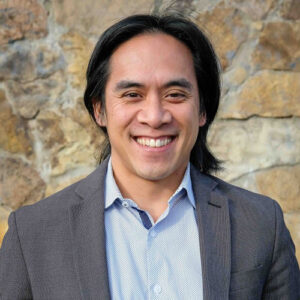New Initiative Aims to Strengthen Democracy in School Elections
Austin, Boyd & Tran: Cornerstone Project seeks to rebuild trust in institutions, decrease polarization and ensure all kids get a quality education.

Get stories like this delivered straight to your inbox. Sign up for The 74 Newsletter
As leaders dedicated to public education, we have seen numerous reforms come and go. Battles have been fought in classrooms, boardrooms and communities, with many education advocates always striving to build a system that serves all students equitably. Yet, despite decades of policy- and community-building efforts, a persistent structural issue remains: public education is built on a governance system that excludes those it is meant to serve.
While public education is the cornerstone of democracy, the technical causes that make school elections unrepresentative are many. Off-year elections lead to low voter turnout for choosing the nation’s approximately 82,000 school board members. Students — those most affected by what happens in the classroom — are excluded from casting ballots. The unchecked influence of dark money remains prevalent. Extremists inject national culture-war issues into local races to spur battles that distract education leaders from their core mission. And few states or communities mandate any kind of legal right to a quality public education.
This status quo results in unrepresentative decision-making, which threatens American public education and democracy as a whole.
According to a recent poll, 81% of voters believe democracy is under threat. But in places where democratic innovations are implemented, voter participation increases, dark money decreases and governance becomes more representative of the communities it serves.This is an emerging opportunity that education advocates must seize.
Across the country, promising signs of progress are emerging. In Portland, Maine, the school board now uses ranked-choice voting. In California, districts are moving en masse to even-year elections, which dramatically increase voter turnout and produce representatives better aligned to their constituents. Cities in Maryland have added students to school boards, and many states are considering a new legal right to a quality education.
These nonpartisan, pro-democracy reforms are creating more inclusive, representative and responsive educational governance systems that reflect the diverse voices of their communities. Yet, this progress is uneven. In states like Texas and Florida, the opposite trend is evident: increasing centralization, a shift toward partisan elections and erosion of community control.
In response, The Cornerstone Project was founded by Education Civil Rights Now, The Open System Institute and Seek Common Ground to advance these trends and support this emerging movement in education to build a stronger democracy. But early on, it became clear that most education leaders were not aware of this critical landscape. For six months, a team researched and now has produced The National EduDemocracy Landscape Map — a unique nationwide analysis that highlights promising policies and challenges (like ranked-choice voting bans) and zeroes in on communities and states with the potential to unrig the system. The research seeks to be the starting point for leaders in education and democracy to work together in a shared pursuit that could accelerate the power of both movements.
How does this get started? First, communities and states can use the map to assess the current status of their edudemocracy. Second, leaders must identify starting points at which governance and electoral design could be changed. Building coalitions to reimagine and create these new systems ensures the result isn’t a one-size-fits-all approach, but rather a strategic push for innovations that meet local needs. Lastly, education and democracy leaders should form learning communities to support one another and commit to the long, hard work of generating even more innovative ideas over time, increasing participation and decreasing polarization.
Achieving these goals will not be possible unless leaders from across the political, practitioner and philanthropic spheres unite in common purpose. This fall and beyond, Cornerstone intends to do its part by raising funds to empower organizations on the ground in states and communities. They will commit to building coalitions — working with state legislatures and local school boards, among others — to pass policies and practices that will open up education democracy. Hopefully, more will join them to learn from the first group and chart their own path to implement high-impact reforms.
Our goal is that by the 2030s, the nation should have a transformed educational election landscape,where innovations like expanding voting rights to 16-year-olds in school board elections, attaining school board turnouts as high as those for presidential elections and enshrining high-quality public education as a civil right are the norm, not the exception.
The decisions made today will shape the future of the education system and democracy for generations to come. The new National EduDemocracy Landscape Map offers a roadmap for navigating this opportunity and rebuilding trust in institutions, reinvigorating public participation, decreasing polarization and ensuring that all children receive the education they need to secure the future they deserve.
Get stories like these delivered straight to your inbox. Sign up for The 74 Newsletter

;)

